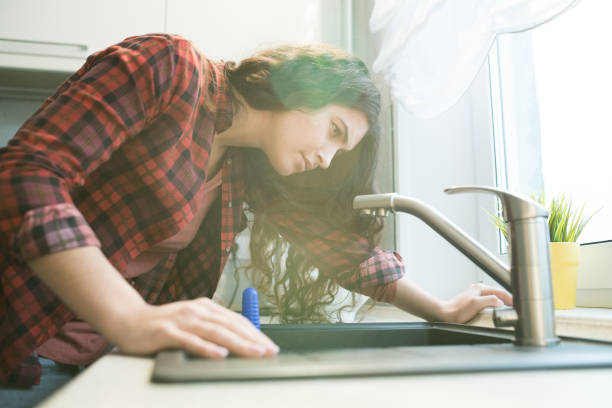The publisher is making several great pointers relating to Water Dripping from Faucet: Why and How to Fix overall in the article underneath.

Trickling taps could seem like a minor hassle, but their impact goes beyond just the inconvenience of the sound. From drainage to sustaining unnecessary monetary costs and health dangers, disregarding a trickling tap can lead to various repercussions. In this post, we'll explore why it's vital to address this usual house concern without delay and successfully.
Wastage of Water
Ecological Effect
Dripping taps contribute considerably to water wastefulness. According to the Epa (EPA), a solitary faucet trickling at one drip per second can waste greater than 3,000 gallons of water per year. This not only pressures water resources however additionally impacts communities and wild animals depending on them.
Financial Costs
Boosted Water Costs
Past the environmental effect, trickling taps can inflate water bills significantly. The gathered waste in time converts right into higher utility costs, which can have been avoided with timely repair services.
Possible Home Damage
Additionally, long term dripping can cause harm to fixtures and surfaces surrounding the faucet. Water build-up can trigger discoloration, deterioration, and even structural issues if left neglected, leading to extra repair costs.
Health Concerns
Mold and Mildew Growth
The constant presence of moisture from a leaking tap produces a suitable setting for mold and mildew and mildew development. These fungi not just endanger interior air high quality but additionally posture wellness dangers, specifically for people with breathing conditions or allergic reactions.
Waterborne Conditions
Stationary water in leaking taps can become a breeding place for germs and other microorganisms, enhancing the threat of waterborne illness. Impurities such as Legionella bacteria prosper in stagnant water, possibly leading to significant health problems when consumed or inhaled.
DIY vs. Specialist Repair
Pros and Cons of DIY Fixing
While some may attempt to deal with a leaking tap themselves, do it yourself repair work include their very own set of difficulties. Without correct understanding and tools, do it yourself efforts can aggravate the concern or lead to incomplete repair services, prolonging the problem.
Advantages of Working With a Professional Plumber
Employing a specialist plumber ensures that the underlying cause of the dripping tap is addressed effectively. Plumbing technicians have the experience and equipment to diagnose and fix tap concerns successfully, conserving time and decreasing the threat of more damages.
Step-by-Step Guide to Taking Care Of a Dripping Faucet
Tools Called for
Prior to attempting to repair a dripping faucet, collect the needed tools, consisting of a flexible wrench, screwdrivers, replacement components (such as washers or cartridges), and plumber's tape.
Common Tap Issues and Their Solutions
Identify the type of faucet and the certain issue creating the drip. Typical troubles include damaged washers, rusty valve seats, or malfunctioning O-rings. Refer to maker instructions or on the internet tutorials for step-by-step advice on repair services.
Safety nets
Regular Maintenance Tips
To stop dripping faucets, do regular upkeep such as cleaning aerators, checking for leaks, and changing damaged components without delay. Additionally, consider installing water-saving devices or upgrading to much more effective fixtures.
Relevance of Prompt Repair Works
Resolving dripping faucets as soon as they're discovered avoids more water wastefulness and potential damages, eventually conserving both water and money over time.
Impact on Home Value
Perception of Well-Maintained Home
Keeping a property in good condition, including resolving upkeep problems like leaking taps, enhances its regarded value and desirability amongst potential purchasers or tenants.
Impact on Resale Value
Properties with well-maintained plumbing components, including taps, command higher resale values in the realty market. Addressing leaking taps can contribute to a positive perception throughout residential or commercial property inspections and arrangements.
Environmental Responsibility
Specific Contribution to Preservation
Taking responsibility for dealing with trickling faucets straightens with broader initiatives toward water conservation and ecological sustainability. Every individual's activities collectively make a significant effect on preserving precious sources.
Lasting Living Practices
By focusing on timely repair work and taking on water-saving routines, individuals add to sustainable living methods that profit both present and future generations.
Verdict
Addressing a leaking tap goes beyond simple convenience; it's a crucial action toward saving water, lowering financial expenses, and guarding wellness and home. Whether via DIY repair services or specialist help, taking action to deal with trickling faucets is a tiny yet impactful means to promote responsible stewardship of sources and add to a much healthier, extra sustainable future.
Why Are My Faucets Dripping (And Can I Fix it Myself)?
Causes of a Dripping or Leaking Faucet
Whether you’re hearing drops of water falling and hitting a sink, or noticing water ooze out from the base of the spout, you shouldn’t ignore a dripping or leaking faucet. And, the good news is, sometimes you can fix the problem yourself.
In this article, we’ll review a few common causes of dripping and leaky. We’ll also walk you through some basic ways to find the problem and handle it without calling anyone — and let you know when to call in a pro.
But, no matter what the cause, or whether you can handle it on your own, the sooner you address it, the better.
Each drip may be a tiny amount of water. But, they all add up quickly. According to the U.S. Geological Survey, one faucet losing one drop every 20 seconds — five a minute — wastes around a liter of water every day, and 173 gallons a year.
Add in more than one in your house, and it’s a lot of water to waste. So, we’ll help you get to the bottom of things quickly.
Four Reasons Your Faucet May Be Dripping
Aerator is Damaged or Unseated Valve Seat is Corroded O Ring is Loose or Worn Out Part of the Assembly is Loose Aerator is Damaged or Unseated
If you unscrew the end of your faucet, you’ll find the aerator. It’s the little stem piece with a screen on it that shuts off the water circulation.
If it’s damaged, or if it’s not sitting right, it will allow water to pass through.
Valve Seat is Corroded
Next is the valve seat, which is connected to the washer. If the washer wasn’t in place correctly, then it could have ground against the seat. Over time, this damages the valve seat.
The problem could also be corrosion: Over time, the part has worn out, and it’s now allowing water to pass through.
O Ring is Loose or Worn Out
Since the o ring is only a small rubber gasket, it’s a common reason why the faucet is dripping. You’ll find it at the base of the faucet, and it’s there to keep water from coming out where it’s not supposed to.
However, it’s common for the o ring to wear out over time. When it does, you’ll notice a drip.
Part of the Assembly is Loose
So far, we’ve looked at a few small, specific parts. But, the problem could be anywhere in the assembly if something’s out of place.
Even if a part isn’t damaged, over time, it may have become loose or dislodged. It could be the parts we mentioned, or the aerator at the tip of the faucet, the stem itself,
Can I Fix a Leaky Faucet Myself?
Depending on the problem, and how handy you are, there’s a chance you can fix a leaky faucet without calling a professional. But, you do run the risk of making the problem worse.
If it’s a small drip, you can certainly try a few troubleshooting tactics. We’ll walk you through them in a moment.
But, no matter what, your first step should be shutting off the water coming into the faucet. You should find a shutoff valve under the sink on the pipes leading to it. Turn each one clockwise until they close tightly.
Next, make sure you have the right tools for whatever you’re attempting. It’s tempting to make do with what you have. But, you need the right ones for a reason: You’re often dealing with small parts that can break if you handle them carelessly.
If you’re feeling confident, here are some places to start.
Items Near the Tip of the Faucet
A few of the parts we mentioned — particularly the valve seat and washer — are located at the tip of the faucet where the water comes out. They’re easy to access, making it a good place to start.
Check the O Ring
To check the o ring, you’ll need to take off the spout at the base. It’s easiest on kitchen sinks with long spouts, versus the smaller, bulkier base on most bathroom sinks.
Either way, this can be tricky, so do it carefully and don’t force anything. If it’s not coming right off, you’re much better off calling in a pro than possibly breaking something.
For a kitchen sink, there’s usually a nut or coupling assembly at the base of the spout. These often slide off easily without using any tools.
Once you’ve disassembled those parts, gently but forcefully twist off the spout.
Then, you can see the o rings. There should be two of the rubber gaskets on the base. If they look worn or damaged, replace them, and see if that solves the problem.

We hope you liked our article on Leaky Faucets: Why They Happen & What to Do About Them. Thank you so much for spending some time to read through our article. Liked our blog? Please quickly share it. Let someone else locate it. We take joy in your readership.